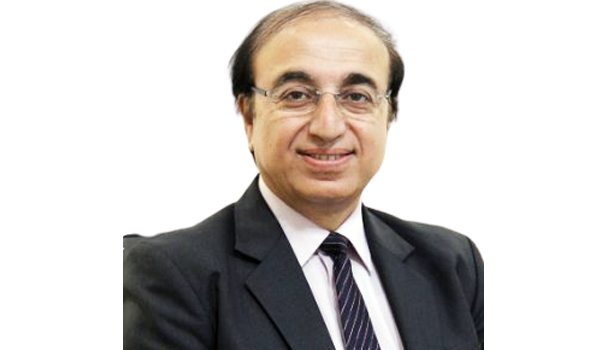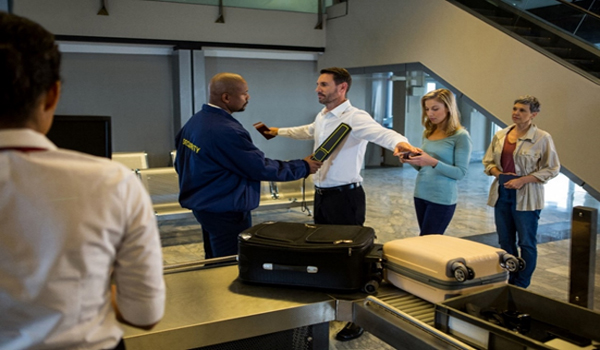
Harsh Wardhan, Chief Executive Officer, CSC India
An airport is a gateway to a country or city, and it creates the first impression for visitors. Singapore Changi Airport has set the bar high for its futuristic look none can deny – airport security systems, facilities, and having one of the world’s best airport staff. Airport security has become one of the most demanding security environments, but when we look back in history, what was airport security like around the world?
Airport security was comparatively simple until 1960s, requiring only the civilian police against the conventional crimes of vandalism, pickpocketing, theft, and breaking-in. However, during the same time in the 60s, civil aviation was becoming a targeted center for politically motivated agendas or crimes. Those crimes were rotated around the general acts of terrorist activities such as bombings, mass shootings, and particularly aircraft hijacking.
Such events were rare and many times without any political agendas. The first hijacking of an aircraft occurred in Peru in 1931. In 1969, 87 hijackings occurred around the world, of which 71 were circling Cuba which typically granted political asylum to the hijackers. In 2022, the diminishing of such events reflects the improved quality of our security services worldwide.
In India, Indira Gandhi International (IGI) Airport is no less when it comes to shopping, dining, or simply relaxing. On their one-stop flights, passengers expect to find a comforting corner where they can sit quietly and read their favorite book over a cup of coffee. The last thing you would want is misconduct, infiltration of unwanted bodies, or weapons to ruin your travel experience. Here, security services play the role of a shield. Initially, what began with the police is now branched out to private security services as well.
The International Civil Aviation Organization (ICAO) responded with major conventions on ‘unlawful acts against civil aviation’ to combat these crimes of hijacking and terrorism. The efficiency of security procedures that were adopted by different nations varied greatly throughout the world. As the acts continued to occur against passenger airliners, security measures gradually became less lax in most jurisdictions.
To increase security, initially boarding passengers were scanned with magnetometers, body searches, X-ray machines, and carry-on baggage too. Public access was denied to the operational areas which could now only be accessed by the authorized staff. Guarding the perimeter of an airfield became more crucial with detecting CCTV cameras and control rooms. The control on security measures tightened over the years.
Security procedures begin long before a passenger’s arrival. The security of staff and passengers remains one of the highest priorities of the aviation industry. Implementing dynamic security measures with advanced screening processes solve complex global security situations, which are centered around current risks, based on evolving or current risks. Offering a professional and streamlined passenger experience must be of utmost priority for the staff.

In recent years, passenger search procedures and luggage checks have been made significantly more thorough. Suspicious activities or potential threats are undergoing careful screening processes, to say the least. Passenger terminals have made the passenger’s accessibility and security operations more effective. All these modifications have made the level of sophistication at the airport more indispensable. This also resulted in reduced check-in times before passengers’ scheduled departure.
Integration of X-ray equipment and electronic detection systems (EDS) to spot metal items and trace explosive materials was made. The national government has the authority to approve the installation of security equipment now. The possibility of a loaded vehicle with explosives near the airport is also a matter of concern. Some of the airport designs came as a potential threat to the safety of people and property. Due to this, some of the operational procedures were re-evaluated and modified like incorporating the parking facilities in the terminal itself.
If we look at the current picture at the airports, the Covid-19 pandemic significantly impacted the revenues in the aviation industry. Fuel prices are also very fluctuating. Security challenges may look very different post the pandemic, but the conventional threats will remain, and so should the assurance of incident management and security. Integration of evolving regulations and their regular adoption is necessary for more efficient safety standards. For smart security, we need to integrate biometrics, track and trace, video surveillance, and analytics.
Risks cannot be avoided completely. The goal of airline operators, SeMS, and all the concerned authorities is to reduce the results of potential negative consequences, as far as reasonably practicable. The inevitable challenge is balancing the variables of risk management and maximizing the utilization of the provided resources.
The Central Industrial Security Force (CISF) is doing a praiseworthy job to keep airport security standards high, and the verification process is also well monitored by the Bureau of Civil Aviation Security (BCAS). Nonetheless, we must drive to see with a critical perspective to avoid any potential mishaps in the future for real-time control. Take, for instance, AI-based face registration along with their Aadhar details can be captured at the entry-level. Strict checks on the exit gates for all passengers, whether VIP or not, stringent checking of the vendors – the duty-free shops. Facilitation or porters should be examined regularly about their internal activities and outer interactions. There is increased usage of sniffer dogs in and out of the airport, while the vigilance officers can investigate in their civilian dress. Surprise official check of customs airline staff can also be considered a norm.
In our viewpoint, the most critical areas that need full-proof security to their maximum capacity are the tarmac area, control tower, area of drop-off/ pickup points, parking area, and the terminal building. Today, key performance indicators (KPIs) have been developed to analyze and evaluate passengers’ behavior and performance at the airport. The key is to build a proactive passenger management approach; for boarding score, pass-through time, & waiting time of all passengers. If we continue to pay attention to such details, we may succeed in sustaining the probability of security risks in the future to make our airports danger-free for all passengers and staff. A more holistic tactic is required for modern airport management, one that aims at improved situational awareness and resource management.
For security, intelligent airports must use sensor technologies, connectivity, smart security gates, unmanned immigration systems, real-time CCTV security surveillance, RFID/ NFC-based baggage tracking, analytics, and mobility to facilitate airport operations. Digital cameras help monitor passenger queues at check-in, security checkpoints, and parking areas. There is touchless processing of baggage through sensing devices and intelligent systems. Check-in security is achieved through sensor technologies, connectivity, mobile devices, and automation. There are integrated airport analytics to drill down, slice-and-dice the data to analyze performance.
The need of the present times is to make airports more intelligent and informed by integrating ready-to-use digital platforms. There is a necessity to provide a solution of an enterprise-wide platform-based solution. Security officials at the airport ought to keep upgrading security-related measures to stay ahead of the potential threats using AI integration and the latest technologies. It is equally crucial to keep a flexible approach for consistent up-gradation of security processes by adapting to the security standards of other airports too.
Airports are undeniably turning progressive, and therefore our security needs to be more intelligent. Airport security cannot be left alone to the government machinery, it must also be the responsibility of all stakeholders, passengers, aviation employees, and more. Airports will be using multiple intersecting digital and automation technologies that must converge in addressing the challenges of security, holistically.
*Views expressed in the article are personal, not of the organisation
